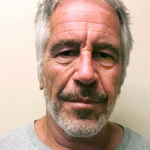Mississippi authorities have not disclosed the company involved in transporting the monkeys, where the monkeys were headed or who owns them. While Tulane University in New Orleans has acknowledged that the monkeys had been housed at its National Biomedical Research Center in Covington, Louisiana, it said it doesn’t own them and won’t identify who does.
An initial report from the sheriff described the monkeys as “aggressive” and carrying diseases such as herpes, adding to the confusion. Tulane later said the monkeys were free of pathogens, but it is still unclear what kind of research the monkeys were used for.
The questions surrounding the Mississippi crash and the mystery of why the animals were traveling through the South are remarkable, animal advocates say.
“When a truck carrying 21 monkeys crashes on a public highway, the community has a right to know who owned those animals, where they were being sent, and what diseases they may have been exposed to and harbored simply by being caught up in the primate experimentation industry,” said Lisa Jones-Engel, senior science adviser on primate experimentation with People for the Ethical Treatment of Animals.
“It is highly unusual — and deeply troubling — that Tulane refuses to identify its partner in this shipment,” Jones-Engel added.
One thing that is known is that the 2025 Chevrolet Silverado pickup hauling the monkeys was driven by a 54-year-old Cascade, Maryland, man when it ran off the highway into the grassy median area, the Mississippi Highway Patrol said in a statement to The Associated Press. The driver wasn’t hurt, nor was his passenger, a 34-year-old resident of Thurmont, Maryland.
Transporting research animals typically requires legally binding contracts that prohibit the parties involved from disclosing information, Tulane University said in a statement to the AP. That’s done for the safety of the animals and to protect proprietary information, the New Orleans-based university said.
“To the best of Tulane’s knowledge, the 13 recovered animals remain in the possession of their owner and are en route to their original destination,” the statement said.
The crash has drawn a range of reactions — from conspiracy theories that suggest a government plot to sicken people to serious responses from people who oppose experimenting on animals.
“How incredibly sad and wrong,” Republican U.S. Rep. Marjorie Taylor Greene said of the crash.
Tulane’s Covington center has received $35 million annually in National Institutes of Health support, and its partners include nearly 500 investigators from more than 155 institutions globally, the school said in an Oct. 9 news release. The center has been funded by NIH since 1964, and federal grants have been a significant source of income for the institution, it said.
In July, some of the research center’s 350 employees held a ribbon-cutting ceremony to mark the opening of a new 10,000-square-foot office building and a new laboratory at the facility. This fall, the facility’s name was changed from the Tulane National Primate Research Center to the Tulane National Biomedical Research Center to reflect its broader mission, university officials announced.
The Mississippi crash is one of at least three major monkey escapes in the U.S. over the past four years.









